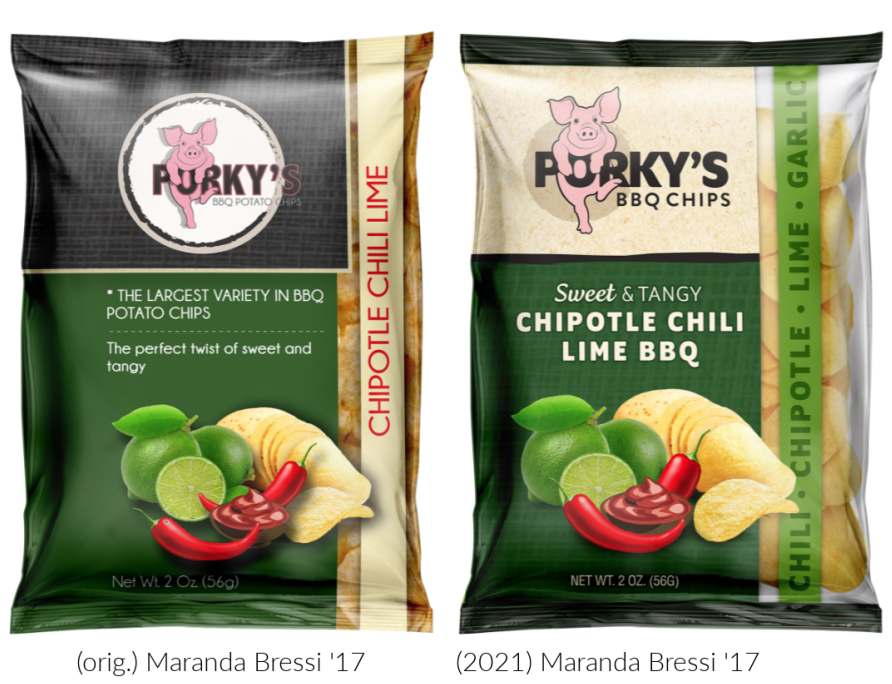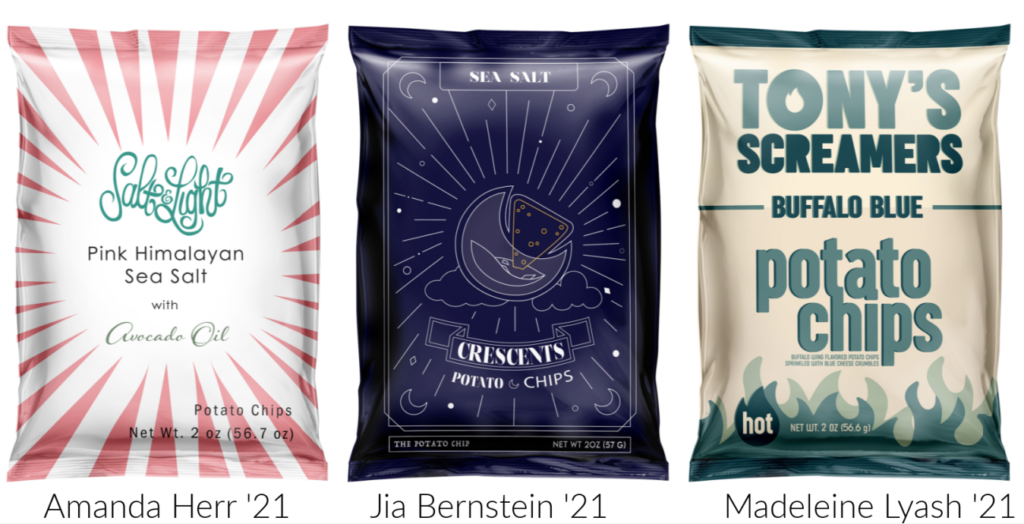
Learning and teaching design with data
Monday, July 19th, 2021
by Tom Newmaster
Adjunct Instructor, Graphic Design
When it comes to teaching package design, one thing there is no shortage of is opinions. Design gurus will share what they believe works, what they think of as best practices, what’s cutting-edge.
But when you get to the marketplace, it’s the consumer’s opinion that counts. How can students gain exposure to that kind of knowledge?
Big data vs. ‘pretty pictures’
Tom Newmaster has taught package design at PCA&D for more than a decade. Founder and partner at FORCEpkg, a Lancaster-based branding and design firm, he tasks his students each year with a project. They must design their own brand of potato chips, from reviewing competitive categories and designing logos to creating packaging to all branding elements that emphasize a product’s points of difference. Recently, the project took on another step in the review process: a partnership between Newmaster and research firm Designalytics that matched the designs directly to consumer feedback data.
“By including these professional researchers on student work, my class could get exposure to the kind of rigorous consumer studies that they would one day encounter in their design careers,” Newmaster says. Another lesson, Newmaster says: “Going through the process of data-driven assessment encourages them to be more objective about their work.”
In other words, “pretty pictures” aren’t enough, and the consumers’ response to your design matters more than your own.
The process
So the senior students prepped for their first exposure to branding and packaging that’s focused on specific consumer behaviors and trends. They built a mini consumer competitive review, then designed their packaging. Designalytics then used real-world testing methodologies used by professional brand managers and design firms to evaluate the designs for factors like findability, how well they stood out from the crowded, spontaneous associations and resonance: how memorable they were.
PCA&D students then received quantitative metrics as well as consumer feedback to help them understand the “why” behind their designs’ performance and identify ways in which they could refine their product.
It’s a lesson that even the most experienced designers need to keep in mind.
“Even the largest brands … often choose creative based on personal opinion rather than objective consumer feedback,” observes Steve Lamoureux, CEO and founder of Designalytics. That reality, he says, “can have very negative business outcomes.
“It’s essential for the next generation of designers to appreciate, in a very tangible way, that their opinions will sometimes differ from those of their target audiences. Designers tend to shy away from data, so we wanted to give these students an opportunity to learn just how valuable data can be for effective design, and how to use it most strategically.”
The study also had a special guest designer, one who bridged the experience divide between student and professional designer: Maranda Bressi ‘17, Graphic Design, a FORCEpkg designer who participated in the potato chip packaging assignment as a PCA&D student. Bressi took her old design and revised it for this study based on what she’s learned as a professional designer.
“When I was a student, I tended to design based on personal preferences,” Bressi says. “Having both my old and new chip bag designs go into testing helped me gain a better idea of my evolution as a designer.” Taking her current experience of data and research into account, Bressi’s consumer preference score improved from 29% for her old design to 71% for her 2021 version.
Why it’s important
Facing nearly 200 pages of consumer feedback and comments from consumers can be brutal, Newmaster says. The PCA&D student designers had to put aside their personal feelings about their work to prepare themselves for the results of the research. They then reviewed that final report with several members of the Designalytics team, as well as Newmaster and Pam Barby, Chair of the Graphic Design Department.
“I believe the perspective that students gain from this kind of professional study will give them a competitive advantage,” Newmaster says. “It’s not the type of collaboration that you see often, so we’re pleased to be a pioneer in this approach.”
Partnerships between professional working faculty and industry leaders create experiential learning opportunities, says Michael Molla, President of PCA&D. They teach students to innovate, to think entrepreneurially, and to make an impact as soon as they enter the creative workforce. “It’s artists and designers,” Molla says, “who can see, and shape, our future.”




